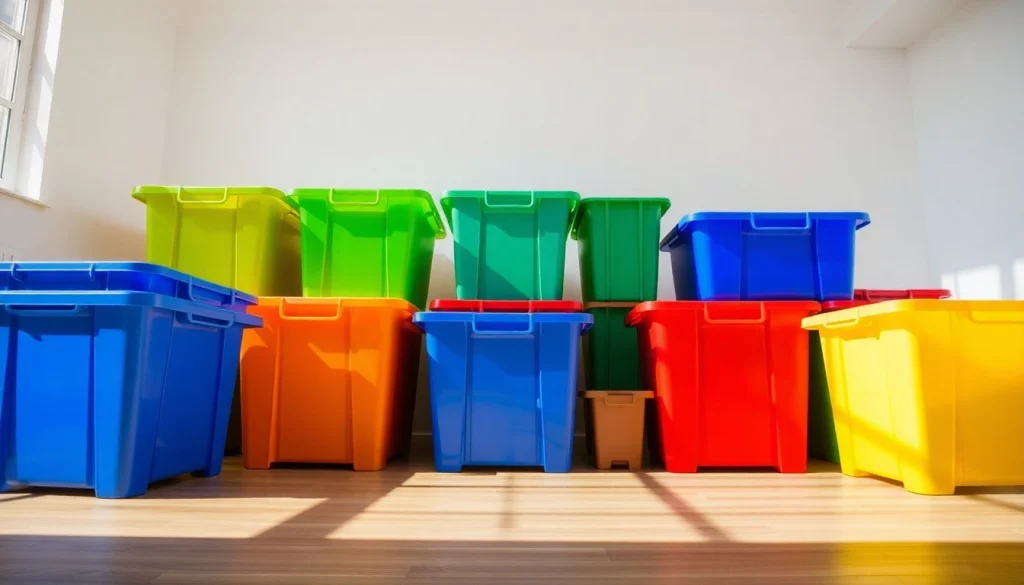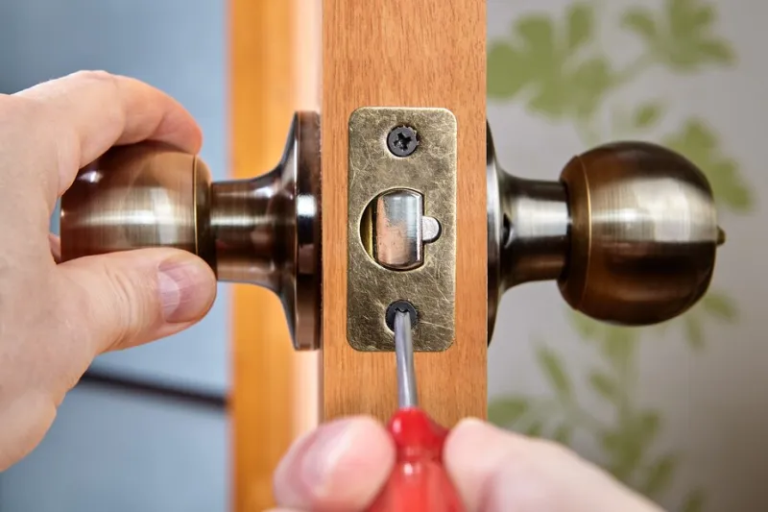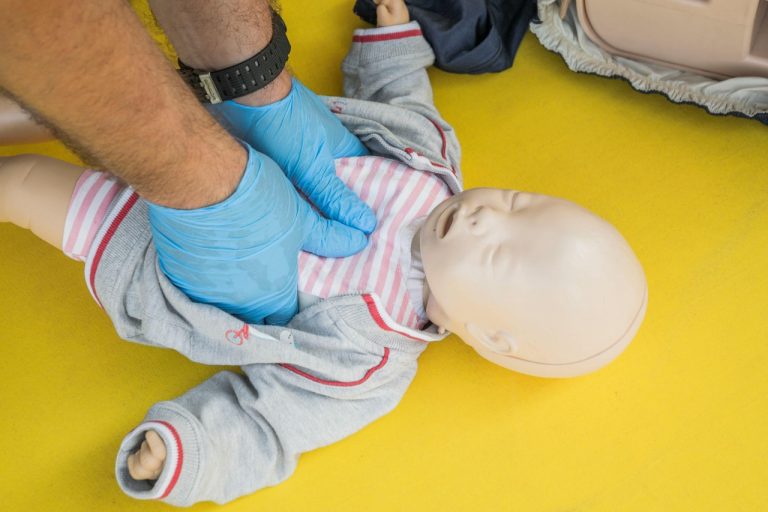
Understanding Moving Bins
What are Moving Bins?
Moving bins are versatile containers designed specifically for the purpose of transporting items during a move. Unlike traditional cardboard boxes, moving bins are typically made of plastic or other durable materials, offering a more robust solution for packing, storing, and transporting belongings. These bins come in various sizes and styles, making them suitable for a wide range of items, from clothing and kitchenware to books and electronics. Because of their sturdiness, moving bins provide a reliable way to protect possessions during relocation.
Types of Moving Bins Available
The market offers several types of moving bins, tailored to different needs and preferences. Some of the most common types include:
- Standard Plastic Bins: These are the most common type, made from high-density polyethylene or polypropylene that ensures durability and resistance to wear and tear.
- Bins with Lids: Equipped with secure lids, these bins prevent items from spilling out during transport, offering an extra layer of protection.
- Stackable Bins: Designed to be easily stacked on top of one another, these bins maximize space and make transportation more convenient.
- Wheeled Bins: For larger or heavier items, wheeled bins provide ease of mobility, allowing users to roll them from one location to another without much physical strain.
- Specialty Moving Bins: These include bins designed specifically for certain types of items, such as wardrobe bins with hangers or bins for delicate electronics.
Benefits of Using Moving Bins
There are numerous advantages to using moving bins instead of traditional cardboard boxes. Some key benefits include:
- Durability: Moving bins are designed to withstand the rigors of relocation, protecting your items better than cardboard boxes, which can easily crush or tear.
- Reusability: Many moving bins are reusable, making them an eco-friendly alternative since they reduce the need for new boxes with each move.
- Water Resistance: Unlike cardboard, many plastic bins are water-resistant, helping to protect contents from moisture during transport.
- Ease of Storage: Bins can be easily stacked, and their design often allows them to fit neatly into vehicles or storage spaces.
- Curb Appeal: For businesses that demonstrate a commitment to sustainability and organization, using moving bins can enhance their reputation.
How to Choose the Right Moving Bins
Factors to Consider When Selecting Moving Bins
Choosing the right moving bins involves assessing several factors to ensure they meet your specific needs:
- Size: Determine the amount and type of items you need to pack. Larger bins are great for bulkier items, while smaller bins work better for fragile or easily damaged goods.
- Weight Capacity: Ensure the bins can support the weight of your items. Check manufacturer specifications for weight limits.
- Stackability: If space is a concern, opt for bins designed for stacking to maximize your vehicle or storage space.
- Lid Type: Decide whether you need bins with secure lids to protect items from dust and damage.
- Material: Choose durable materials that can withstand impacts and handling during the moving process.
Popular Features of Durable Moving Bins
When selecting moving bins, certain features can enhance usability:
- Integrated Handles: Ergonomically designed handles can facilitate lifting and carrying.
- Labeling Space: Many bins come with areas for labeling, allowing for easy identification during and after the move.
- Clear or Frosted Sides: Transparent materials make it easy to see the contents without opening the bin.
- Locking Mechanisms: Bins that lock together or have secure fastening systems provide extra security for valuable items.
- Eco-Friendly Options: Some manufacturers offer bins made from recycled materials, appealing to environmentally conscious consumers.
Comparing Pricing of Moving Bins
Pricing for moving bins can vary widely based on size, material, and features. Here are some general price ranges to consider:
- Standard Plastic Bins: Typically range from $5 to $30 each depending on size and brand.
- Heavy-Duty Bins: These might cost between $30 and $50 or more, reflecting their durability and additional features.
- Wheeled Bins: Expect prices starting around $40 up to $80, depending on the weight capacity and brand reputation.
- Rental Bins: Renting bins can be a cost-effective solution for temporary relocations, often ranging from $1 to $5 per bin per week.
Renting vs. Buying Moving Bins
Advantages of Renting Moving Bins
Renting moving bins can offer several key benefits:
- Cost Efficiency: Renting is usually cheaper for short-term moving situations, especially if you don’t need the bins regularly afterward.
- Convenience: Rental services often deliver and pick up the bins, saving you time and effort in transporting them to and from your location.
- No Storage Needed: If you live in a small space, not having to store bins after your move is a significant advantage.
When Purchase Makes Sense
While renting is practical for temporary needs, there are scenarios where purchasing moving bins is more advantageous:
- Frequent Moves: Individuals or businesses that move regularly can benefit from having their own supply of durable bins.
- Long-Term Storage: Purchasing bins for items you need to store long-term can provide a better value in the long run.
- Customization: When you own your bins, you can customize them to suit your storage needs, including labels and organization systems.
Cost Analysis of Renting vs. Buying
To decide between renting and buying moving bins, it’s essential to conduct a cost analysis:
- Rental Costs: Consider the duration of your move, number of bins needed, and the rental company’s pricing structure. For a week’s rental of ten bins at $3 each, you would spend $30.
- Purchase Costs: If buying ten bins at an average of $20 each, your total upfront cost would be $200. However, if you plan to use these bins for future moves, the long-term savings can justify the initial cost.
- Break-Even Analysis: Calculate how many uses out of the bins you need for the purchase to break even against renting over time. If you move frequently, purchasing may be the financially sound decision.
Best Practices for Packing Moving Bins
How to Efficiently Pack Your Moving Bins
To ensure a smooth moving process, efficient packing of your bins is crucial. Here are some best practices:
- Gather Materials: Collect all packing materials including bubble wrap, packing paper, and tape before starting.
- Pack Strategically: Place heavier items at the bottom and lighter ones on top to maintain balance and prevent crushing.
- Fill in Gaps: Use packing materials to fill spaces between items to prevent shifting during transport.
- Leave Space for Movement: Avoid overpacking, as this can lead to damage and make lifting the bins more difficult.
Labeling Procedures for Moving Bins
Proper labeling enhances organizational efficiency. Here are some effective labeling strategies:
- Use Color-Coded Labels: Assign colors to different rooms or categories (e.g., kitchen, living room) for quick identification.
- Include Contents on Labels: Write a brief description of the contents on the label to facilitate sorting upon arrival.
- Numbering System: Assign bin numbers for tracking and ensure that a corresponding inventory list is maintained.
Maximizing Space in Moving Bins
To make the most out of the available space in your moving bins, consider these tips:
- Utilize Vertical Space: Stack smaller items on top of larger ones and take advantage of the height of the bins.
- Disassemble Items: Whenever possible, disassemble furniture or appliances to fit more items in the bin.
- Use Bags for Soft Items: Store blankets, pillows, or clothing in reusable bags that can be easily compressed to save space.
Where to Find the Best Moving Bins
Online Retailers for Moving Bins
Many online retailers specialize in moving supplies, including moving bins. Some notable mentions include:
- Amazon: A variety of moving bins with customer reviews to help you decide.
- U-Haul: Offers rental and purchase options for plastic moving boxes.
- Walmart: Provides a selection of plastic moving totes and bins, often at competitive prices.
Local Stores Offering Moving Bins
Many physical stores also carry moving bins, including:
- Home Improvement Stores: Home Depot and Lowe’s often have dedicated sections for moving supplies, including bins.
- Container Stores: Specialized in storage solutions, these stores offer a wide range of options for moving bins.
- Office Supply Stores: Staples and other office supply stores may carry sturdy bins useful for business relocations.
Recommendations for Sustainable Moving Bins
In today’s eco-conscious society, choosing sustainable options is desirable. Here are suggestions for more environmentally friendly moving bins:
- Recycled Material Bins: Look for bins made from recycled plastic, which reduce the impact on the environment.
- Rentals: Opting for rental bins reduces the number of single-use products and promotes sustainability.
- Reusable Bins: Invest in durable, high-quality bins that can be reused across multiple moves to minimize waste.





